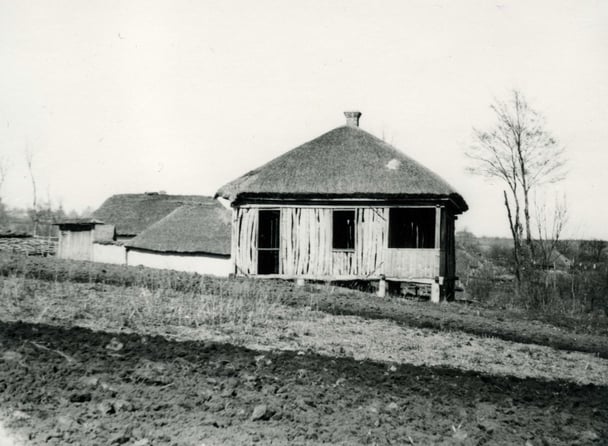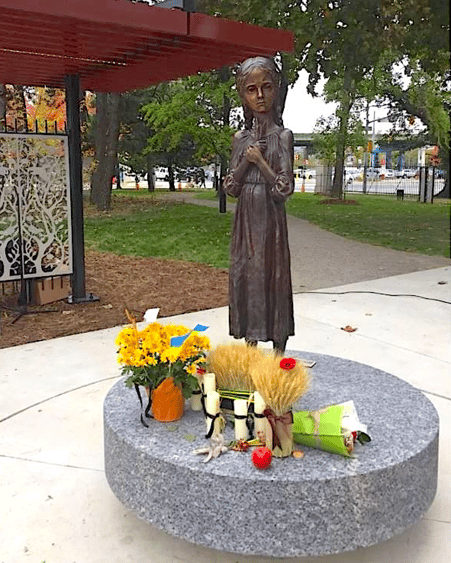This blog is Part 2 of Teaching about The Holodomor. We recommend reading through Part 1 of the blog, Teaching about The Holodomor, as it provides a meaningful way to teach about the man-made famine inflicted upon Ukrainians by Joseph Stalin and the Soviets. You can use the contents of that blog as a way to learn and/or teach about The Holodomor before engaging in Holodomor Memorial Day in Schools.
It is important to have set days designated to commemorate events, such as genocides, in world history that need to be remembered so that we, individually and collectively, can do better and be better.
In 2008 the Canadian Government pased the Ukrainian Famine and Genocide (“Holodomor”) Memorial Day Act. This established the fourth Saturday in November, every year, as “Ukrainian Famine and Genocide (“Holodomor”) Memorial Day”. In 2009, the Ontario Government followed suit with the Holodomor Memorial Day Act in order to “memorialize those who perished as victims of genocide by famine that occurred in Ukraine from 1932 to 1933.” Local school boards have also committed to honouring this memorial day such as, The Toronto Catholic District School Board who declared that “the fourth Friday of November be a day of recognition in all schools in honour of those who died during Holodomor and that this day be officially marked in the systemwide calendar.”

When thinking about memorial days from a Facing History perspective, we consider:
- What does it mean to observe a day of remembrance?
- What exactly should we be remembering?
- How do these commemorative days provide an opportunity to pause, learn more and reflect on choices?
- What impact do memorials have on the way we think about history and contemporary situations?
Rabbi Jonathan Sacks reminds us:
“History is information. Memory, by contrast, is part of identity...Memory is the past as present, as it lives on in me.”
We transform “information” into “memory” when we invite emotional engagement and ethical reflection into our classrooms and conversations, integrating an enlarged understanding of history and human behavior into our own awareness of ourselves and our society today. This memory can help us navigate our complex and often troubling present: recognizing small shifts in the climate of our communities, resisting the normalization of hateful words and actions, and responding with greater urgency and solidarity when our neighbors are targeted and our values are undermined. This isn’t just the task of teachers and students in our classrooms. It’s a responsibility we all share.
How do you need to prepare to plan a culturally responsive and respectful Holodomor Memorial Day?
Starting with your why: The starting point for preparation of the Holodomor Memorial Day is to consider and be clear about the main purpose and focus of your efforts.
- Do you want to educate people in the community about the Holodomor?
- Do you want to provide people in the community with an immersive activity as an act of remembrance?
- Do you want to mobilize community members and promote activism about issues related to the Holodomor?
These are just some of the questions you can ask of yourself as you determine your purpose and focus.

Creation and Implementation of Holodomor Memorial Day in Schools
Once you’ve determined your purpose and focus for organizing and implementing a Holodomor Memorial Day in your school, it is time to create the plan.
Effective structures for Holodomor Memorial Day in Schools range widely from school assemblies, a morning announcement, building memorial displays to place around the school, having a lunch and learn, or having a Holodomor survivor or family members of a Holodomor survivor come to speak to a class or a group of classes. It is best to start with something small and manageable in your first year putting together a Holodomor Memorial Day in School, something that can be easily managed between you, other staff, and students who are helping out. Each year, you can grow your efforts to build off of your previous experiences.
I recommend using these reliable sources for Holodomor Memorial Day in Schools:
- Holodomor Research and Education Consortium’s website and exploring the Teaching Materials, Learning Activities, and Resources for Teachers. Here you can find a wide variety of primary and secondary resources ranging from pictures to government documents to poetry to essays about The Holodomor.
- You can also use this website for the Holodomor Mobile Classroom (which can be booked to come to your school!) to access a variety of resources.
- For more resources, see Part 1 of the blog here.
My Class’s Experience
When I have my students from the Genocide and Crimes Against Humanity course create and implement a program for Holodomor Memorial Day in Schools, it is as a unit culminating activity in groups of 3-5.
Year after year, the number of different Holodomor Memorial Day in Schools continues to grow and serves as inspiration. The students look through the different activities and initiatives created by previous years’ Genocide and Crimes Against Humanity cohorts, pick one of these previously developed plans, add their own unique ideas, and implement them as part of that year’s Holodomor Memorial Day in the school.
As a group, they review the requisite government laws, consider the unit information regarding the Holodomor, and move forward on their creation of the memorial day.
Students use their Google Document graphic organizer to document their progress on the task. This also provides me access to observe their progress and ensure that it is respectful, historically accurate, and appropriate. I also continue to meet with the groups to discuss their ideas and progress.
Engaging Students in Reflective Learning
Having a quick reflection activity helps engage an audience, so that they become part of the experience. For example, it can be effective to have participants respond to a prompt on sticky notes that are then immediately incorporated into the display. You can have video camera booths set up for students to record their reactions to what they’ve seen, heard, or read. There are many different ways to add a part to your memorial day programming that will increase the engagement of the audience and the opportunity for them to consider, even for a brief moment, what they have just learned.
I have run Holodomor Memorial Day in Schools for the past 5 years at my school. If you have any questions or want to discuss your plan, please feel free to contact me. I would also love to hear about what you created and how it went! I can be reached at michael.anthony@tdsb.on.ca.

